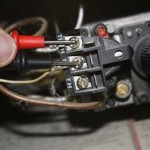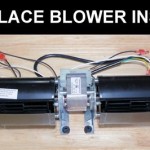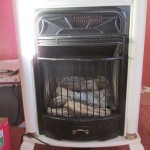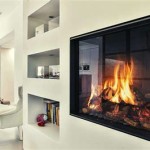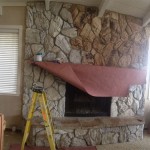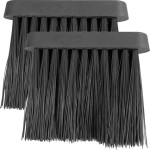Propane Fireplace Heaters: An In-Depth Guide
Propane fireplace heaters represent a popular heating solution for homes, offering a blend of ambiance, convenience, and supplemental warmth. They provide a viable alternative or supplement to traditional wood-burning fireplaces and central heating systems. This article explores the mechanics, advantages, disadvantages, and key considerations involved in selecting and utilizing propane fireplace heaters.
At their core, propane fireplace heaters operate by burning propane gas to generate heat. The system typically consists of a burner, a gas valve, a control mechanism (often a remote or thermostat), and simulated logs made from ceramic or other heat-resistant materials. When activated, the gas valve opens, allowing propane to flow to the burner. An ignition system, either electronic or manual, ignites the gas, creating a flame that heats the faux logs. The heated logs then radiate warmth into the surrounding space. The design of the logs and the flame pattern are often carefully engineered to mimic the appearance of a real wood-burning fire.
The heat output of a propane fireplace heater is measured in British thermal units (BTUs). BTU ratings indicate the amount of heat the unit can produce per hour. Higher BTU ratings correspond to greater heating capacity. When selecting a propane fireplace heater, it is essential to match the BTU rating to the size of the room or area intended for heating. A heater with an insufficient BTU rating will struggle to effectively warm the space, while an excessively high BTU rating may lead to overheating and wasted energy.
Advantages of Propane Fireplace Heaters
Propane fireplace heaters offer a range of benefits, making them a desirable option for many homeowners. These advantages contribute to their widespread adoption as a supplementary and aesthetically pleasing heating solution.
One significant advantage is convenience. Unlike wood-burning fireplaces, propane fireplace heaters eliminate the need for wood storage, hauling, and cleanup. There is no ash to dispose of, no need to constantly add fuel, and no concern about creosote buildup in the chimney. A propane fireplace heater can be activated with a simple switch or remote control, providing instant warmth and ambiance. This ease of use makes them particularly appealing for individuals seeking a low-maintenance heating solution.
Another key benefit is their efficiency. Propane fireplace heaters are generally more efficient than traditional wood-burning fireplaces. A significant portion of the heat generated by a wood-burning fireplace is lost up the chimney, whereas propane fireplace heaters are designed to maximize heat radiation into the room. This improved efficiency can translate to lower heating costs, especially when used as a supplemental heat source.
Furthermore, propane fireplace heaters offer greater control over heat output. Many models are equipped with adjustable thermostats or flame controls, allowing users to precisely regulate the amount of heat produced. This precise control ensures consistent comfort levels and prevents overheating. Wood-burning fireplaces, on the other hand, offer limited control over heat output and can be prone to temperature fluctuations.
Finally, propane fireplaces offer versatility in installation. They can be installed in various locations within a home, including areas where a traditional fireplace would be impractical or impossible to install. Ventless models, in particular, offer greater flexibility as they do not require a chimney or flue. Vented models, however, require connection to a venting system to safely exhaust combustion byproducts.
Disadvantages of Propane Fireplace Heaters
Despite their numerous advantages, propane fireplace heaters also have certain drawbacks that should be considered before making a purchase. Understanding these limitations is crucial for informed decision-making.
One major disadvantage is the reliance on propane gas. Propane is a fossil fuel, and its price can fluctuate depending on market conditions. Homeowners using propane fireplace heaters must factor in the cost of propane when budgeting for heating expenses. Furthermore, propane tanks need to be periodically refilled, which can be inconvenient and may require scheduling deliveries or transporting propane tanks to a filling station.
Another concern is the potential for carbon monoxide (CO) production. While propane fireplace heaters are designed to burn fuel efficiently, incomplete combustion can occur, leading to the release of CO. Carbon monoxide is a colorless, odorless gas that can be deadly if inhaled in sufficient concentrations. To mitigate this risk, it is essential to install and maintain carbon monoxide detectors in the vicinity of the fireplace heater. Regular inspections and maintenance of the heater are also crucial to ensure proper combustion.
Additionally, ventless propane fireplace heaters have certain limitations. While they offer installation flexibility, they release combustion byproducts, including water vapor and small amounts of nitrogen dioxide, into the room. This can potentially affect indoor air quality, especially in poorly ventilated spaces. Some individuals may be sensitive to these byproducts, experiencing respiratory irritation or other health issues. Vented models, while requiring a venting system, eliminate this concern by exhausting combustion gases outside the home.
Finally, propane fireplace heaters may not provide sufficient heat for large spaces or as the primary heating source in extremely cold climates. Their effectiveness is typically limited to supplemental heating of smaller rooms or zones. In situations requiring whole-house heating, a central heating system may be a more appropriate solution.
Key Considerations When Choosing a Propane Fireplace Heater
Selecting the right propane fireplace heater requires careful consideration of various factors, including heating needs, budget, installation requirements, and safety concerns. A thorough evaluation of these aspects will help ensure a satisfying and effective heating solution.
Firstly, determine the appropriate BTU rating for the intended space. Measure the square footage of the room and consult BTU charts or calculators to estimate the required heat output. Consider factors such as insulation levels, ceiling height, and climate conditions. It is generally better to err on the side of slightly higher BTU output than to choose a heater that is undersized for the space.
Secondly, choose between vented and ventless models. Vented models require a chimney or flue for exhausting combustion gases, while ventless models do not. Ventless models offer greater installation flexibility but may impact indoor air quality. Evaluate the existing venting infrastructure in the home and consider the potential impact on air quality when making this decision. Consult with a qualified HVAC professional if needed.
Thirdly, consider the features and aesthetics of the fireplace heater. Look for features such as adjustable thermostats, remote controls, and realistic flame patterns. Choose a design that complements the decor of the room and enhances the overall ambiance. Explore different log sets and firebox designs to find a style that suits personal preferences.
Fourthly, prioritize safety. Ensure that the propane fireplace heater is certified by a recognized testing laboratory, such as Underwriters Laboratories (UL) or CSA Group. Install and maintain carbon monoxide detectors in the vicinity of the heater. Schedule regular inspections and maintenance by a qualified technician to ensure proper operation and prevent potential hazards. Adhere to all manufacturer's instructions and safety guidelines.
Finally, compare prices and warranties from different manufacturers and retailers. Consider the long-term costs of propane gas, maintenance, and repairs. Read reviews and testimonials from other customers to gauge the reliability and performance of different models. A well-informed purchasing decision will result in a propane fireplace heater that provides years of comfortable warmth and aesthetic appeal.

Comparing Wood And Propane Heat Tiny Stove

Propane Fireplaces Gas Stoves Id Mt Wy Fall River

Mini Franklin Soapstone Gas Stove Woodstove

Radiance Vent Free Gas Stove The Place

Fireplaces Gas Kingsman Fireplace Heater Ipi Propane Zdv3318lpe

Freestanding Gas Stoves Friendly Fires

Williams 65 000 Btu Fireplace Front Liquid Propane Gas Room Heater With Blower 6502921a The Home Depot

Thelin Gnome Gas Stove Hearth S Great American Fireplace In Menomonie Wi

Liquid Propane Gas Fireplace Inserts At Com

Patio Propane Fire Column Gas Fireplace Stone Look Outdoor Heater Beige Gray
Related Posts

